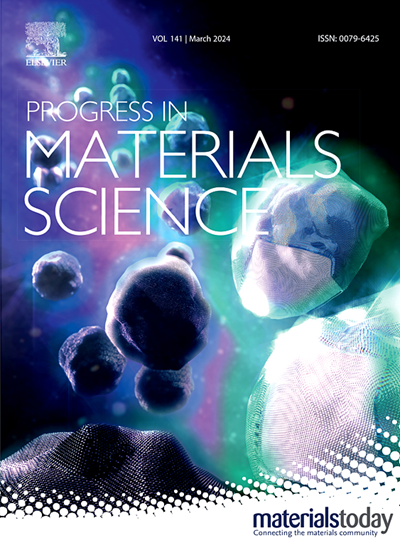在亚微米分辨率下绘制晶体材料局部应力和位错的HR-EBSD技术综述
IF 40
1区 材料科学
Q1 MATERIALS SCIENCE, MULTIDISCIPLINARY
引用次数: 0
摘要
高分辨率电子背散射衍射(HR-EBSD)是一种在扫描电子显微镜下绘制弹性应变、晶体取向和位错密度的技术。这篇综述涵盖了该技术的背景和数学,将其置于更广泛的EBSD技术和其他材料表征方法的背景下。几个案例研究展示了HR-EBSD在金属塑性研究、微电子失效分析和薄膜缺陷量化方面的应用。这是一个全面的资源,为研究人员开发这种技术,以及介绍那些希望应用它。本文章由计算机程序翻译,如有差异,请以英文原文为准。
An overview of HR-EBSD techniques for mapping local stress and dislocations in crystalline materials at sub-micron resolution
High resolution electron backscatter diffraction (HR-EBSD) is a technique used to map elastic strain, crystallographic orientation and dislocation density in a scanning electron microscope. This review covers the background and mathematics of this technique, contextualizing it within the broader landscape of EBSD techniques and other materials characterization methods. Several case studies are presented showing the application of HR-EBSD to the study of plasticity in metals, failure analysis in microelectronics and defect quantification in thin films. This is intended to be a comprehensive resource for researchers developing this technique as well as an introduction to those wishing to apply it.
求助全文
通过发布文献求助,成功后即可免费获取论文全文。
去求助
来源期刊

Progress in Materials Science
工程技术-材料科学:综合
CiteScore
59.60
自引率
0.80%
发文量
101
审稿时长
11.4 months
期刊介绍:
Progress in Materials Science is a journal that publishes authoritative and critical reviews of recent advances in the science of materials. The focus of the journal is on the fundamental aspects of materials science, particularly those concerning microstructure and nanostructure and their relationship to properties. Emphasis is also placed on the thermodynamics, kinetics, mechanisms, and modeling of processes within materials, as well as the understanding of material properties in engineering and other applications.
The journal welcomes reviews from authors who are active leaders in the field of materials science and have a strong scientific track record. Materials of interest include metallic, ceramic, polymeric, biological, medical, and composite materials in all forms.
Manuscripts submitted to Progress in Materials Science are generally longer than those found in other research journals. While the focus is on invited reviews, interested authors may submit a proposal for consideration. Non-invited manuscripts are required to be preceded by the submission of a proposal. Authors publishing in Progress in Materials Science have the option to publish their research via subscription or open access. Open access publication requires the author or research funder to meet a publication fee (APC).
Abstracting and indexing services for Progress in Materials Science include Current Contents, Science Citation Index Expanded, Materials Science Citation Index, Chemical Abstracts, Engineering Index, INSPEC, and Scopus.
 求助内容:
求助内容: 应助结果提醒方式:
应助结果提醒方式:


